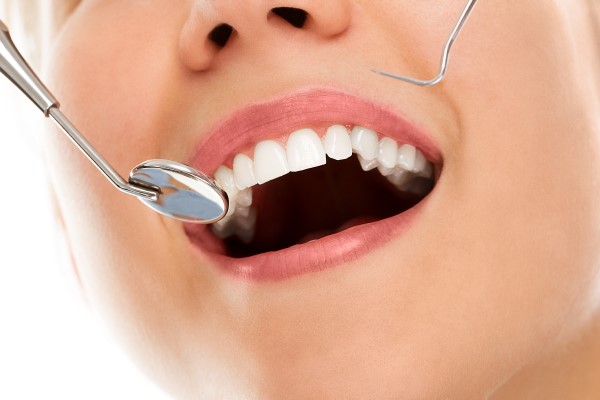Dental Deep Cleaning for Gum Infection

Patients with periodontal disease sometimes need a procedure known as a dental deep cleaning. Periodontal disease, or gum disease, is a chronic infection that can be caused by a number of factors, including smoking, diabetes, poor oral hygiene, or family history of the disease. The treatment of this condition is ongoing and lasts for a lifetime. Deep cleanings, also known as periodontal scaling and root planing, are often the first line of defense.
Common questions about a dental deep cleaning
Patients often have questions about this procedure and its effect on the overall management of periodontal disease. There should be a concerted effort between the dentist, hygienist, and patient to make sure that everyone is aware of the treatment plan and goals.
What is a dental deep cleaning?
Periodontitis, an inflammatory disease, is caused by harmful plaque, calculus, and bacteria beneath the gums. If left undisturbed, these microbes will eventually destroy the bone supporting the teeth, causing tooth loss. In a scaling and root planing procedure, a dentist or hygienist uses special instruments called scalers to remove these harmful substances beneath the gums. In some cases, an ultrasonic scaler may be used. This instrument sprays water and vibrates to help disrupt and flush out the damaging bacteria.
The patient typically has one side of the mouth treated at a time. In this way, special attention can be given to each area, and it is often more comfortable for the patient. In more severe cases, only a few teeth may be treated at one time.
Who can benefit from this type of treatment?
Those in the early stages of gum disease can often benefit from a dental deep cleaning. When the source of infection is removed, the gums are able to begin the healing process. When plaque and tartar are cleaned from the teeth, the patient can practice better home hygiene habits, too. Even patients in the later stages of periodontitis can have favorable results from a scaling and root planing procedure.
What are the goals of treatment?
Every patient's needs are unique, and because periodontal disease is a multifactorial condition, the treatment can vary greatly. However, the goal of any periodontal treatment is to halt the progression of the disease. Many of the effects of gum disease cannot be reversed, but treatments aim to keep the teeth and supporting structures as healthy as possible.
Conclusion
Because there are so many complex considerations with the cause and treatment of periodontitis, it is important that the patient and dentist have a thorough discussion about treatment options and goals. A dental deep cleaning can be the right first step for many patients, and the procedure is a minor one with little to no recovery period. For those who think they could benefit from this treatment process, a consultation is recommended with a dental professional. With the joint effort of the dental team and the patient, a healthy smile can be achieved.
Request an appointment here: https://riverfallsfamilydental.com or call River Falls Family Dental at (812) 962-7342 for an appointment in our New Albany office.
Check out what others are saying about our services on Yelp: Read our Yelp reviews.
Related Posts
It is possible to enhance the overall appearance of a patient’s smile through a unique combination of cosmetic dental procedures. This is known as a smile makeover. Dental providers make these treatment plans custom to each patient. Here is what to expect at every step of a smile makeover, from design to execution.A smile makeover…
Periodontics focuses on the health of the jawbone and gums. As part of a comprehensive dental care plan, general and family dentists often integrate periodontics into their services. This specialized field is concerned with preventing, diagnosing, and treating periodontal disease while also supporting tooth replacement and enhancing the smile. Understanding the basics of periodontics can…
Cavities are a common dental issue that, when left untreated, can cause discomfort and affect oral health. A general dentist offers a variety of options for cavity treatment. Visiting the dentist for routine appointments can prevent tooth decay or repair the damage as soon as possible.Cavities, also known as dental caries, occur when bacteria in…
If you have severe dental pain, an infection, or an injury, seeing an emergency dentist can give you immediate relief. However, following the recommended care instructions after professional treatment is important to ensure proper healing and avoid potential complications. Following these post-treatment guidelines can lead to a smoother recovery and better overall oral health.Following a…
